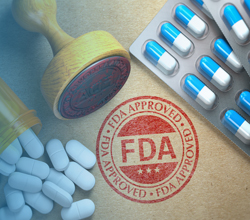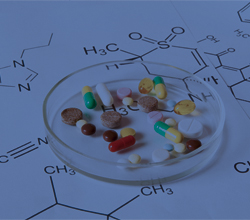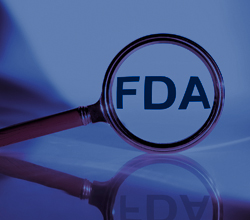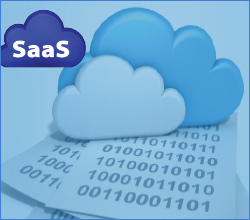
Veterinary Medicine and the DEA Due Diligence Requirement for Dispensing and Prescribing a Controlled Substance
 Carlos M Aquino
Carlos M Aquino
 60 Min
60 Min
Product Id: 704892
This webinar will discuss federal laws and regulations covering all veterinarians who dispense and prescribe controlled substances, record-keeping requirements, penalties for non-compliance and the DEA due diligence required.

The New EU Clinical Trial Regulation
 Robert J Russell
Robert J Russell
 90 Min
90 Min
Product Id: 703758
This course will present attendees with a clear understanding of the new processes and requirements for EU sponsors of clinical trials as the new regulation is published, rolled-out and implemented by the Member States, the European Medicines Agency and the European Commission.

Type 2 DMFs for Active Pharmaceutical Ingredients (APIs)
 Peggy Berry
Peggy Berry
 90 Min
90 Min
Product Id: 704882
This webinar will discuss approaches to developing and understanding the manufacturing process for a drug substance. The information obtained will enable completion of the drug substance information in the Drug Master File – in support of Module 3 of a CTD application. The webinar will address aspects of development and manufacture of the drug substance including steps to reduce impurities. Both traditional and enhanced approaches are discussed.

USP Hot Topics: What's Hot Now and How to Track Coming Changes and Influence USP
 Gregory Martin
Gregory Martin
 90 Min
90 Min
Product Id: 703521
This webinar will provide insight into some of the hottest topics at USP which will have the greatest impact on pharmaceutical laboratories. It will provide a comprehensive overview of the major changes in the USP that have been proposed or implemented in the last year and describe strategies for keeping abreast of coming changes and how you can influence them.

Biological Indicators for Sterilization Performance Qualification
 Aaron Mertens
Aaron Mertens
 90 Min
90 Min
Product Id: 704879
This webinar will focus on biological indicator usage for sterilization performance qualification in the pharmaceutical and biotech industry. Biological indicator preparation, including population and D-value resistance determination, is presented in depth. Understanding these details is critical to successfully choose a biological indicator and qualify a sterilization process.

Regulation of Natural Health Products in Canada
 James Russell
James Russell
 90 Min
90 Min
Product Id: 704044
This training program will discuss regulations that impact Natural Health Products in Canada. It will detail how to verify the products’ compliance with published regulations. It will also detail requirements for registration, labeling and acceptable marketing claims.

Auditing for Microbiological Aspects of Pharmaceutical and Biopharmaceutical Manufacturing
 Henry Urbach
Henry Urbach
 60 Min
60 Min
Product Id: 702634
This 60-minute webinar will show how you can design a robust microbiological audit program for pharmaceutical and biopharmaceutical product manufacturing, that effectively assesses your facility and that of your supplier to ensure your facilities and products are free from microbial contamination.

Steam Sterilization Microbiology and Autoclave Performance Qualification
 Aaron Mertens
Aaron Mertens
 90 Min
90 Min
Product Id: 704850
This webinar will discuss the regulatory and GMP requirements for steam sterilization and the mechanism as it relates to bacterial cells and endospores. The training will cover autoclave performance qualification studies and the tools to be used.

Extractables and Leachables - Biopharma Polymeric Devices
 Mark Trotter
Mark Trotter
 90 Min
90 Min
Product Id: 704798
This webinar training will examine the key topics concerning the use of polymeric single-use products in biopharm processes. It will offer a basic understanding of industry standards and regulatory compliance. The training program is designed for the experienced as well as those new to biopharmaceutical processes and need to know current requirements for determination of extractables and leachables in biopharm processes.

Managing SOP Compliance per FDA Regulations
 Danielle DeLucy
Danielle DeLucy
 60 Min
60 Min
Product Id: 704797
This training program will discuss formatting SOPs, FDA expectations for written documents and regulatory requirements, and the roles and responsibilities of authors and reviewers of SOPs. The program will also overview how to ensure a system for the control, archival, and disposal of written procedures.

Overview of Life Cycle of an Analytical Method in Development and Manufacture of Biologics
 Rajesh Gupta
Rajesh Gupta
 60 Min
60 Min
Product Id: 704755
This training program will offer an understanding of analytical method life cycle and regulatory expectations and requirements for the methods during product development. The webinar will also analyze risks and inherent variability of analytical methods.

Renovation of Aging Aseptic and Biological Facilities
 Erich Bozenhardt
Erich Bozenhardt
 60 Min
60 Min
Product Id: 704789
In this training program, attendees will explore modern technologies, process changes and smart architectural design that can extend the useful life of manufacturers' aseptic and biologic facilities by 10 to 20 years. These upgrades can also make facilities more compliant, cut down on operating risks, and improve performance.

Preparation for GMP Inspections by Regulatory Agencies
 Peggy Berry
Peggy Berry
 90 Min
90 Min
Product Id: 704843
This GMP inspections webinar will review what to expect during the agency inspection and how to successfully and efficiently streamline and manage the inspection, including adequate follow-up during and after the inspection.

Comparing the Pharmaceutical and Medical Device Product Lifecycles
 Howard Cooper
Howard Cooper
 120 Min
120 Min
Product Id: 704853
This webinar will help you gain a greater understanding of regulatory and compliance requirements and how the early product lifecycle requirements establish the basic groundwork as a foundation from product development to commercialization continuing to out commercialization and product discontinuation.

Understanding the Full Realm of Product Liability
 Randall Goodden
Randall Goodden
 60 Min
60 Min
Product Id: 704743
This training program will highlight all the key areas that need to be under control or can lead to product recalls, product liability lawsuits, and the causes of these economic disasters for manufacturing corporations.

Lyophilization: What you Need to Know, Validation and Regulatory Approaches
 John R Godshalk
John R Godshalk
 60 Min
60 Min
Product Id: 704845
In this webinar, attendees will learn how lyophilization cycles are developed, how lyophilizers work and how they are controlled and what is important to FDA and other regulatory bodies in the inspection of lyophilizers and in the validation process.

ISO 9001:2015 Transition Overview
 Kevin Gholston
Kevin Gholston
 90 Min
90 Min
Product Id: 704781
The new ISO 9001:2015 requires companies to establish context of the organization and utilize this perspective along with the new High Level Structure (HLS) Clauses. This webinar is designed for quality assurance managers, management representatives, ISO 9001 implementation teams, and quality management system auditors. With the release of ISO 9001:2015 in September 23, 2015, now is the time to prepare. This 9001-2015 Transition Overview course will highlight the changes from the ISO 9001:2008 revision.

4-Hr Virtual Training: Key Factors to Write an Effective Standard Operating Procedure and Work Instructions
 Joy McElroy
Joy McElroy
 4 hrs
4 hrs
Product Id: 704778
This training program will guide attendees in writing effective Standard Operating Procedures and Work Instructions. It will also discuss how to assess and write to the audience and how to review and revise SOPs and Work Instructions.

Risk-Based Monitoring Beyond the RACT
 Beat Widler
Beat Widler
 60 Min
60 Min
Product Id: 704721
This training program will explain what the strengths and weaknesses of the RACT are and where it should be used with caution. It will also elaborate on what needs to be done to establish a comprehensive risk management approach to support risk-based quality management in clinical trials.

Social Networks and Pharmacovigilance: What Will Change?
 Marco Anelli
Marco Anelli
 90 Min
90 Min
Product Id: 704690
This training program will examine the different types of social networks (Facebook, Twitter, etc.) and help identify similarities, differences, and challenges for pharmacovigilance (PV) professionals. It will also analyze social networks and the new approach to benefit/risk ratio.


























